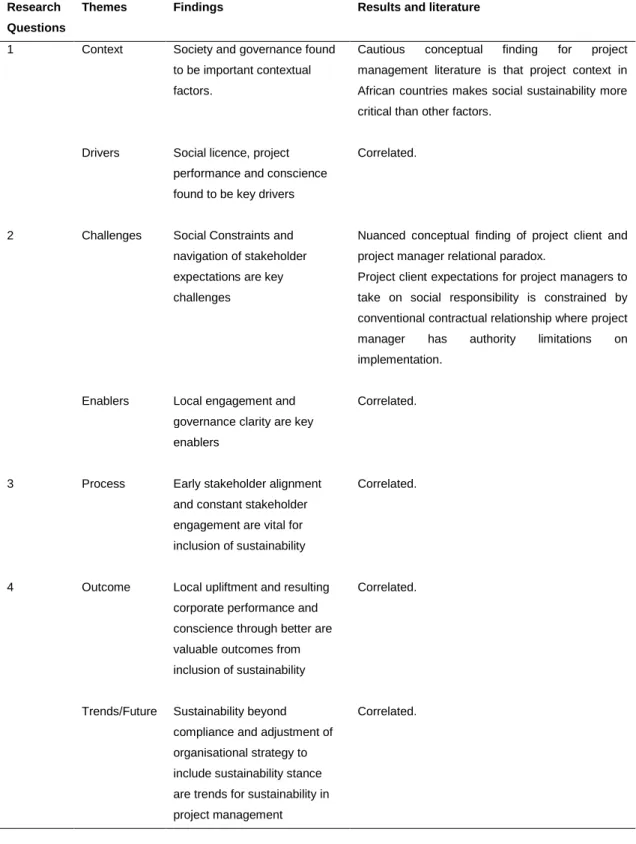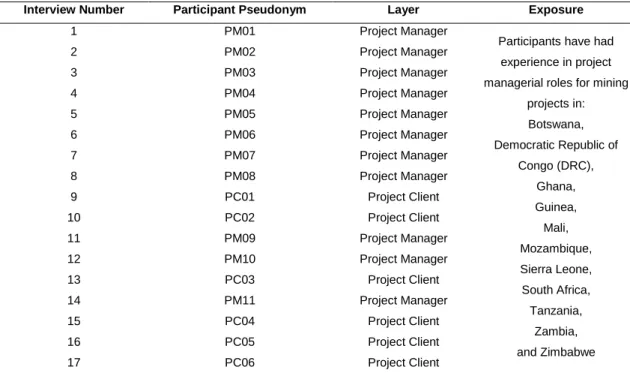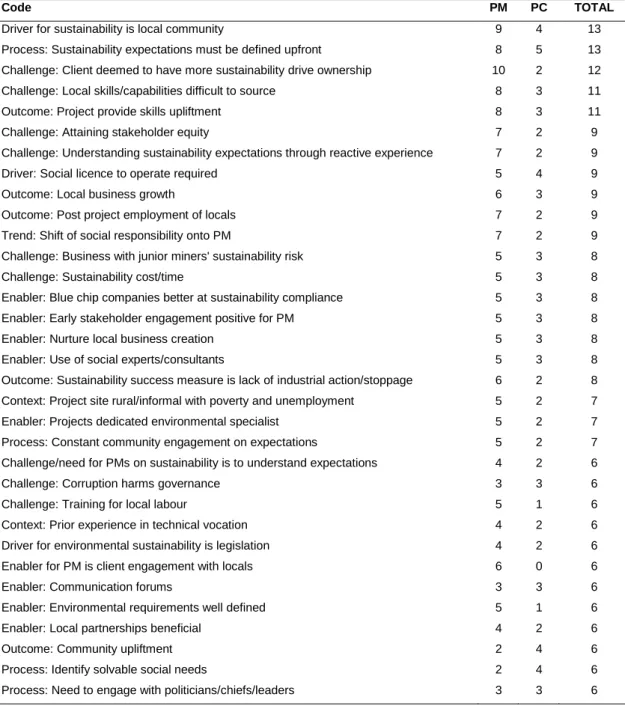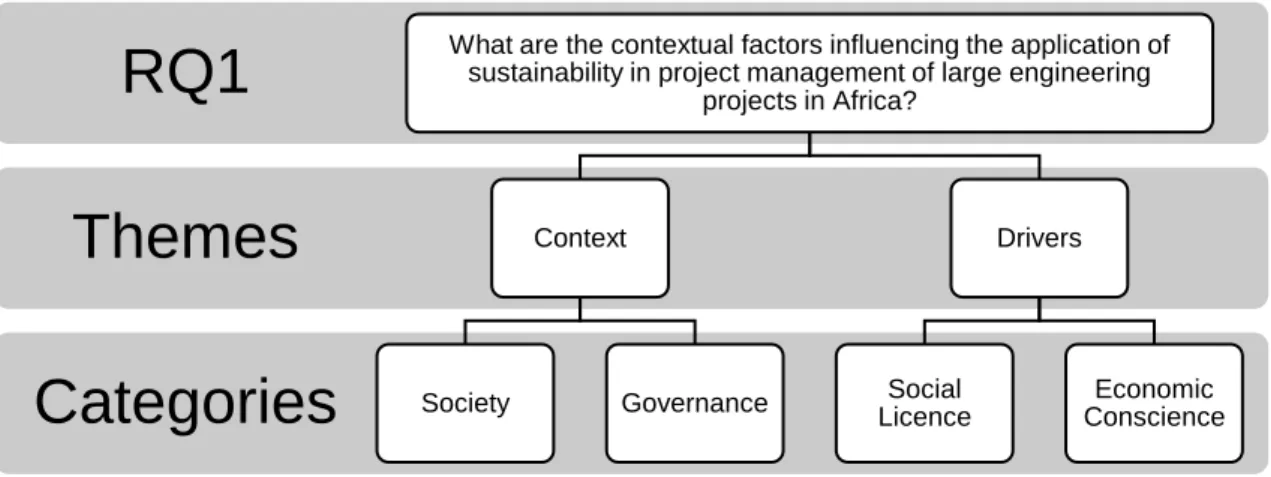The purpose of this study was to examine the inclusion of sustainability in project management for major engineering projects in Africa. The theoretical need for this research is based on the growing focus on sustainability for business and the lack of theoretical application of the principles of sustainability in project management theory (Yu, Zhu, Yang, Wang, & Sun, 2018).
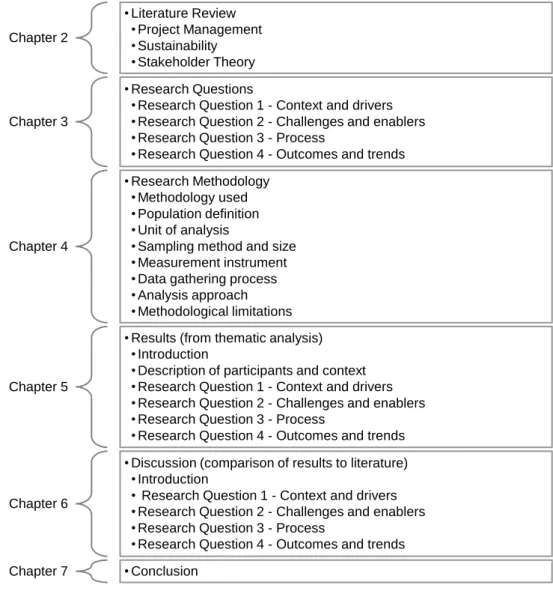
Project Success
To this end, we see that organizations are increasingly being held accountable for post-project impacts (Labuschagne & Brent, 2005). This literature encourages project managers to use supporting experts to achieve certain outcomes in the project.
The Context of Large Engineering Projects
Note: Adapted from Pinto and Prescott (1988), Variations in Critical Success Factors Over the Stages in the Project Life Cycle. Nevertheless, the topic of sustainability has found increasing support in business initiatives and the triple bottom line of economic, environmental and social performance has become ubiquitous in the literature (Silvius, 2017).
Sustainability Within Project Management
The Gap
Criticism that project management does not talk about sustainability
Determination of Sustainability
This raises the question of why the intersection of sustainability in project management for large projects has not been as progressive as expected. While the conversation around the assessment of sustainability in the project management of large-scale projects is dynamic, the claim of Hacking and Guthrie (2008) that the convergence of sustainability assessment methods that offer practical utility in navigating government policy can still be held.
Sustainability Contextuality
Because project managers find themselves in constantly changing environments, there may be some subjectivity in the selection of sustainability criteria they should choose to address (Fernández-Sánchez & Rodríguez-López, 2010). This seems a kind of dichotomy in that there are many examples of attempts to converge the use of sustainability assessment methods, however this contextuality shows that project managers must approach sustainability from the context of the project location and related elements. to.
Barriers to Practice
Note: Adapted from Hwang and Ng (2013) from Project management knowledge and skills for green construction: Overcoming challenges. It therefore appears to be extremely important that in order to overcome these challenges, project managers will need to be supported by organizational strategy and policy aligned with a sustainability agenda (Marcelino-Sádaba et al., 2015).
Drivers of Sustainability
The unit of analysis was the individual and specific experiences of project managers and client project managers within large engineering projects in Africa in the mining sector. This chapter presents the results of interviews conducted with PMs and CMs on the integration of sustainability into the project management of large engineering projects in Africa.
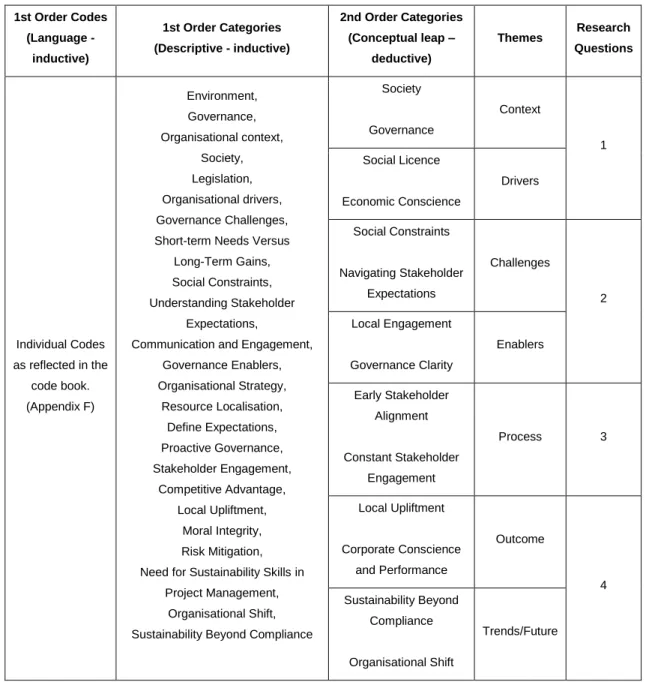
Context
PM08: "...legislatively South Africa is much more difficult, I might say, or stricter than the rest of Africa". PM01: "...that's legislated, this law that tells you to abide by it. PM10: "...if you have to bring it back to project management, you really can't handle that.
Drivers
PC04: "…it's important that you have that social license to operate and that you have content and a happy environment because ultimately they are. PM08: "…customers will drive the social and environmental elements to make sure you don't leave them a legacy that they became a problem. PM06: "…if you manage it properly, it will help build a good reputation that will benefit us when we bid for work with the same client."
Summary of Results for Research Question 1
Despite being mentioned as an important driver, conscience as a driver was less prevalent than those previously mentioned and was more prevalent among PCs, which project managers considered to be a driver of sustainability efforts. This question aims to reveal the endogenous and exogenous implementation barriers that project managers and PCs face in integrating sustainability into project management for large-scale projects in their context. It also aims to reveal the factors to support this and how these actors can exploit them.
Challenges
PM05: "...we ended up with poor quality issues and the customers made us 100% responsible for all the issues that resulted from that. PM03: "...we now found out that this damn footprint of the plant is 200 meters inside the village found . PC01: "...the EPCM role versus the project owner, the client role is a challenge because it's easy for.
Enablers
PC03: "...by involving the local community in the understanding of the project from an early stage, then you have a much better chance of it not presenting a problem for the community down the road.". PC06: "…sitting down with the municipality, figuring out what your plans are for the next 10 years. PC03: "…the authorities in most places are actually quite good, I think, in terms of asking to do a environmental impact assessment, an environmental management plan to be implemented".
Summary of Results for Research Question 2
Process
PM04: "…especially for younger customers, we first need to understand how much money is going to be available for social spending." PC04: “…there are certain objectives or drivers that you have to set up front if we say that 100% of the unskilled labor force is going to come from home communities or local communities. PC04: “… you need to set up a system where you have ongoing local engagement with local communities.
Summary of Results for Research Question 3
During this engagement, transparency should be maintained and social spending should be strictly allocated to projects without donating money to local stakeholders.
Outcomes
PM07: "...more positive [results] are precisely with sustainable companies that are created through the project itself that is being created. PC04: "...if you can have meaningful skills transfer, during this project we skill up people and create sustainable companies that can continue to provide service in the area." PM02: "...you don't build a mine in a war-torn region that has no, I suppose, choice of law, by not engaging with the community.
Trends
PC04: "...with the realization now that this is something that we cannot attribute to the minimum criteria laid down in the law, we have to move on, because the expectation is much higher. PM09: "...you have to be much more involved in advance to think about the purchasing strategy. PM05: "...the owners, realizing the problems are there, make it the contractor's problem.
Summary of Results for Research Question 4
This arrangement is also limited by the PM's ability to dictate their own durability criteria to the PCs. These results were presented as categories according to the themes identified for each of the questions. This chapter presents a discussion of the analysis of the results in chapter five and compares them with the literature in chapter 2.
Context
The results for social from both emphasize the importance of the social aspect of sustainability, which aligns with Labuschagne and Brent (2006) who identify it as a pillar of weakness in sustainability efforts. However, the results differ in showing that social and governance are more important in the African context and this is tentatively advanced as a conceptual finding. Finally, project managers of large-scale projects in the African context would be wise to prioritize social and governance factors.
Drivers
This could improve their thinking about incorporating sustainability into project management for these projects. This is in line with findings from the results, which describe risk reduction driven by financiers with responsible investment strategies and the conscience of project actors. The results are therefore consistent with the findings in the literature, which show that social license and economic awareness are key factors for the integration of sustainability in project management.
Summary of the Discussion for Research Question 1
This was highlighted for its importance in avoiding costly social problems and which is also consistent with the findings herein regarding social license to operate. It can be concluded that these results are valid and reflect the important drivers for project managers to include sustainability in project management of large projects in Africa. This question explored the endogenous and exogenous barriers to implementation that project managers face in their inclusion of sustainability in project management for large projects in their context.
Challenges
Agreement on the responsibility of social initiatives within projects can be such a project objective that can contribute to the success of the project. However, the literature reviewed does not seem to point specifically to the dynamics of social sustainability responsibility expectations between PMs and PCs that are not fulfilled. It fails to recognize that the expectation between PMs and PCs of creation and delivery of social responsibility seems ill-defined, with actors having different perceptions of project drivers.
Enablers
In conclusion, these findings show that the literature agrees with the social constraints identified as a major challenge for incorporating sustainability into project management of large-scale projects. Martens and Carvalho (2017) verify this with their findings that relationships with local stakeholders are a key factor in incorporating sustainability into project management. Local involvement and a clear understanding of expectations are important prerequisites for successfully incorporating sustainability into project management.
Summary of the Discussion for Research Question 2
Enablers here revealed a largely linked to normal project management practices prescribed by project management institutions. It highlights that in this case project management theory prescribes the useful enablers through which sustainability can be incorporated into project management. It identified early stakeholder alignment and constant stakeholder engagement as key requirements in the process of incorporating sustainability into project management.
Process
Summary of the Discussion for Research Question 3
Outcomes
Silvius (2017) emphasizes the value-based approach as a defining feature of sustainability in the design of project management. 2017) also find that smooth progress, conflict mitigation, image protection and cost performance are indicators of stakeholder management performance. However, Tan, Ochoa, Langston and Shen (2015) find for international construction that business performance increases at lower levels of sustainability performance, but shows negative returns at higher levels of sustainability performance. This indicates that incorporating sustainability into project management for large engineering projects in Africa may be at a lower level of sustainability performance.
Trends
The implication, supported by the results, is that project management practices for large projects in Africa can demonstrate better economic performance with increased emphasis on social aspects. The results are therefore in line with the findings in the literature and confirm the findings about the trends resulting from the sustainability agenda. Project managers will need to pursue sustainability in addition to compliance and a key factor in achieving this will be the use of sustainability experts in the form of social experts on project teams.
Summary of the Discussion for Research Question 4
This study aimed to investigate the inclusion of sustainability in project management for large-scale engineering projects in Africa. The insights gained centered strongly on engagement with local stakeholders and how their interests influence the inclusion of sustainability in project management. It is concluded that the inclusion of sustainability in project management practice in this context should keep local stakeholder involvement at the forefront of project managers.
It was found that by appropriate inclusion of sustainability in project management there were economic benefits to be achieved. 3 Drivers In your experience what drives the inclusion of social and environmental issues in project management of large-scale projects.
